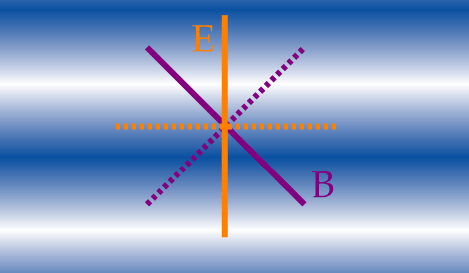
In general, the polarization pattern has two geometrical components. Instead of describing it by the descriptions North-South and East-West (or more formally, the Stokes parameters) which depend on an arbitrary choice of coordinates, we can describe it by its orientation relative to itself.
There are two directions picked out by a polarization pattern: that which is picked out by its orientation and that which is picked out by its amplitude. The amplitudes of the polarization patterns described on the last page are modulated in space by the plane wave they are sitting on:

Here the plane wave is going in the up-down (North-South) direction. If the polarization is parallel or perpedicular to this direction, it is called an E-mode polarization. If it is crossed at 45 degree angles, it is called a B-mode polarization. Recall that density perturbations just generate parallel polarization and so generate only E-mode polarization. Gravitational waves generate both and so have a component of B-mode polarization.
The full polarization pattern is a random superposition of these plane-wave modulated patterns. B-modes retain their special nature as manifest in the fact that they can possess a handedness that distinguishes left from right. For example here are two polarization fields with the same structure but in the E-mode on the left and the B-mode on the right:
